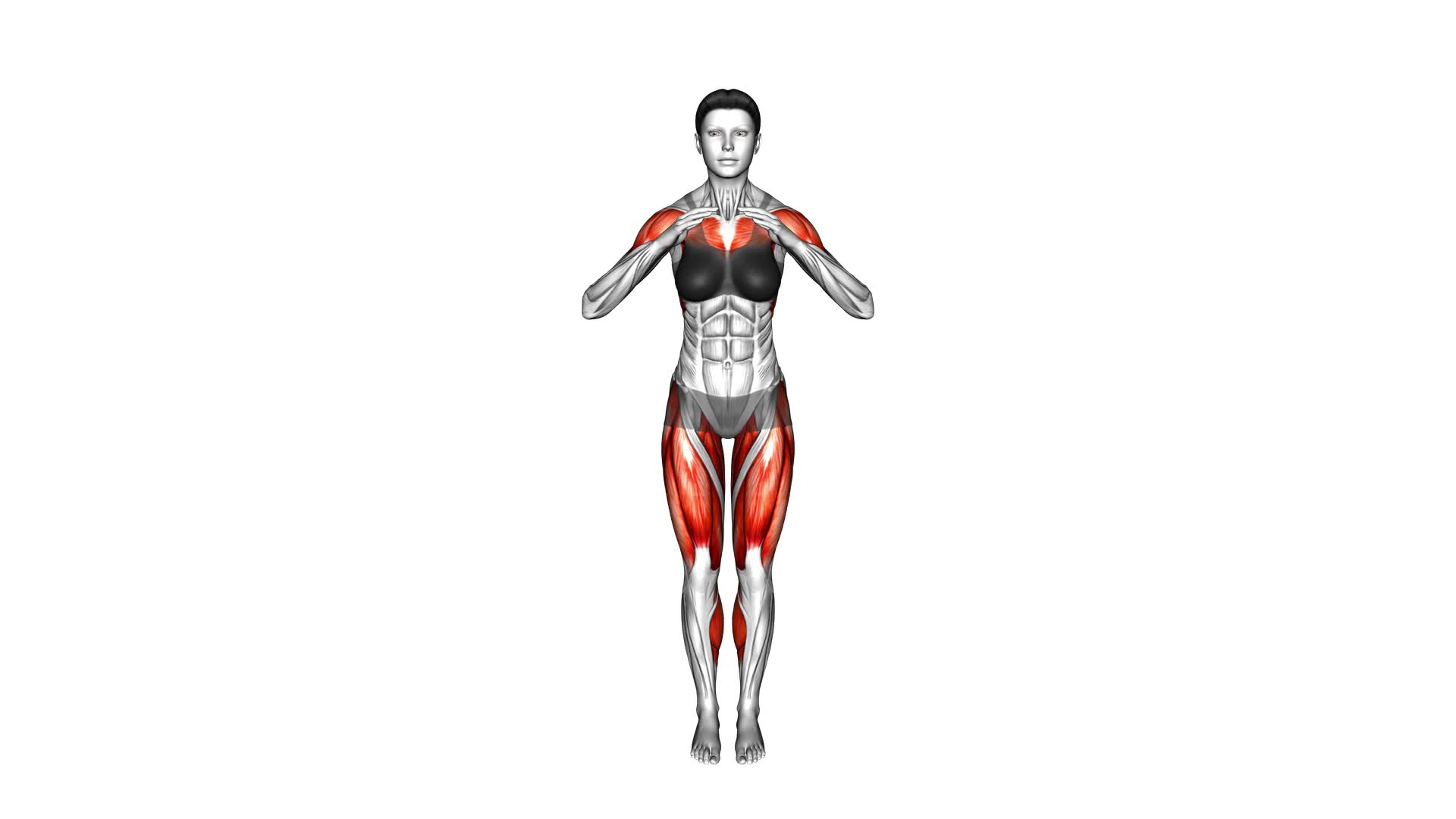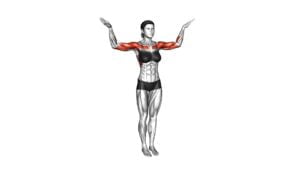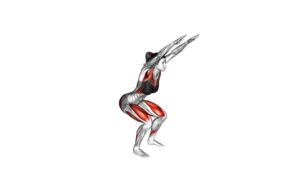Swim Leg Circle (female) – Video Exercise Guide & Tips

Are you looking for a new exercise to add to your routine? Look no further than the swim leg circle!
Watch This Exercise Video
This video exercise guide and tips will show you the proper form and technique to master this move. Whether you're a beginner or an advanced swimmer, there are modifications for everyone.
Get ready to maximize your workout and reap the benefits of the swim leg circle. Let's dive in!
Key Takeaways
- Proper form and technique is important, including maintaining controlled and fluid motion and avoiding rushing through the exercise.
- Engaging core muscles for stability and being mindful of strain on hip flexors is crucial.
- The swim leg circle exercise strengthens hip and leg muscles, improves flexibility in hip joints, enhances core strength and posture, and aids in overall performance in other activities.
- Beginners should start with smaller leg circles and gradually increase their range of motion, while advanced swimmers can increase speed, add resistance, incorporate training drills, and challenge balance and stability.
Proper Form and Technique
To achieve proper form and technique when performing the Swim Leg Circle exercise, you should focus on maintaining a controlled and fluid motion throughout the movement. This will help you avoid common mistakes and prevent common injuries.
One common mistake is rushing through the exercise, which can lead to sloppy form and potential strain on your muscles. It's important to take your time and perform the movement with intention and control.
Another common mistake isn't engaging your core muscles properly. Your core is crucial for stability and control during the exercise, so make sure to activate those muscles and maintain a stable torso throughout the movement.
When it comes to common injuries, the Swim Leg Circle exercise can put strain on the hip flexors if not performed correctly. To minimize the risk of injury, focus on keeping your movements smooth and controlled, and avoid any jerky or sudden motions.
Additionally, be mindful of any discomfort or pain in your lower back, as this could be a sign of improper form. Always listen to your body and make adjustments as needed to ensure proper technique and prevent injuries.
Benefits of the Swim Leg Circle
One major benefit of performing the Swim Leg Circle exercise is that it strengthens the hip and leg muscles. By engaging these muscles, you can improve your overall lower body strength and stability. The circular motion of the legs also helps in improving flexibility in the hip joints, allowing for better range of motion and reduced risk of injury.
In addition to strengthening the hip and leg muscles, the Swim Leg Circle exercise also helps to strengthen the core muscles. As you perform the exercise, you're required to engage your abdominal muscles to maintain stability and control. This not only improves your core strength but also helps to improve your overall posture and balance.
By regularly incorporating the Swim Leg Circle exercise into your workout routine, you can enjoy the benefits of improved flexibility in the hip joints and strengthened core muscles. This can have a positive impact on your overall performance in other activities, such as running, cycling, or even everyday movements like walking and climbing stairs.
Step-By-Step Guide for Beginners
Start by lying on your back with your legs extended and arms by your sides. Before you begin the swim leg circle exercise, it's important to be aware of some common beginner mistakes and challenges that may arise. By understanding these potential pitfalls, you can improve your technique and get the most out of this exercise.
Here are a few things to keep in mind:
- Engage your core: One common mistake isn't properly engaging your core muscles. Remember to activate your abdominal muscles throughout the exercise to maintain stability and control.
- Control your leg movements: It's important to move your legs in a controlled manner, avoiding any jerky or sudden movements. This will help you maintain balance and prevent strain on your hip joints.
- Focus on your breath: Breathing can be a challenge, especially for beginners. Try to coordinate your breath with the movement of your legs, inhaling as you lift your legs and exhaling as you lower them.
- Start with small circles: Beginners may find it difficult to perform large leg circles at first. Start with smaller circles and gradually increase the range of motion as you build strength and flexibility.
Modifications for Advanced Swimmers
As an advanced swimmer, you can enhance the swim leg circle exercise by incorporating modifications that challenge your strength and endurance.
To take your swim leg circle to the next level, try incorporating advanced techniques and training drills.
One modification you can try is increasing the speed of your leg circles. By performing the exercise at a faster pace, you'll engage your muscles more intensely and improve your overall speed in the water.
Another modification is to add resistance to your leg circles. This can be done by using a resistance band around your ankles or by wearing ankle weights. The added resistance will make the exercise more challenging and help to build strength in your legs.
Additionally, you can incorporate training drills that focus on specific aspects of your swimming technique. For example, you can perform the swim leg circle exercise while holding a kickboard in front of you. This will force you to engage your core muscles and maintain a steady body position in the water.
Another drill you can try is performing the leg circles with one arm extended in front of you. This will challenge your balance and stability while also improving your upper body strength.
By incorporating these advanced techniques and training drills into your swim leg circle exercise, you can continue to push yourself and improve your swimming performance.
Now, let's move on to the next section for tips on how to maximize your workout.
Tips for Maximizing Your Workout
To maximize your workout, continue incorporating advanced techniques and training drills into your swim leg circle exercise. Focus on engaging your core muscles, building strength in your legs, and improving your overall swimming performance. Here are some tips to help you get the most out of your workout:
- Avoid common mistakes: One of the most common mistakes people make during the swim leg circle exercise isn't maintaining proper form. Make sure to keep your core engaged throughout the exercise and avoid arching your back. Additionally, be mindful of your breathing and try to maintain a consistent rhythm.
- Incorporate resistance training: Adding resistance to your swim leg circle exercise can help increase the intensity and effectiveness of your workout. You can use resistance bands or ankle weights to add resistance to your legs, making the exercise more challenging and helping to build strength.
- Vary your speed and intensity: To get the most out of your workout, it's important to vary your speed and intensity. Try alternating between slow and controlled movements and fast and explosive movements. This will help improve your overall swimming performance and increase your cardiovascular endurance.
- Listen to your body: It's important to listen to your body and make adjustments as needed. If you feel any pain or discomfort during the exercise, stop and consult with a professional. Remember to always warm up before starting any exercise routine and cool down afterwards to prevent injury and promote recovery.
Frequently Asked Questions
How Many Repetitions of the Swim Leg Circle Exercise Should I Do?
To get the most out of the swim leg circle exercise, it's important to know the recommended repetitions and maintain proper form.
The ideal number of repetitions may vary depending on your fitness level and goals. However, it's generally recommended to start with 8-12 repetitions per leg.
Remember to focus on performing the exercise with proper form, engaging your core, and keeping your movements controlled and fluid.
Can I Perform the Swim Leg Circle Exercise With Other Swimming Strokes?
Yes, you can perform the swim leg circle exercise with other swimming strokes. It's a versatile exercise that can be incorporated into different strokes like freestyle, backstroke, and butterfly.
The swim leg circle exercise helps to strengthen your leg muscles, improve flexibility, and enhance your overall swimming technique.
Beginners can modify this exercise by starting with smaller leg circles and gradually increasing the size and speed as they build strength and confidence in the water.
What Muscles Does the Swim Leg Circle Exercise Target?
The swim leg circle exercise targets multiple muscles in your body. It primarily works your core muscles, including your abdominals and lower back, as you engage them to stabilize your body during the movement.
Additionally, it activates your hip flexors, glutes, and leg muscles, as you perform the circular motion with your legs.
The swim leg circle exercise can be modified and performed with different swimming strokes, allowing you to target specific muscle groups and improve your overall swimming technique.
Its benefits include strengthening your core, improving flexibility, and enhancing your swimming performance.
Can the Swim Leg Circle Exercise Help Improve My Flexibility?
Yes, the swim leg circle exercise can definitely help improve your flexibility. By incorporating this exercise into your workout routine, you can target and stretch various muscles in your legs and hips, promoting increased range of motion and flexibility.
Additionally, there are different variations of the swim leg circle exercise that you can explore to challenge yourself and target different muscle groups.
Is There a Recommended Warm-Up Routine Before Performing the Swim Leg Circle Exercise?
Before performing the swim leg circle exercise, it's important to follow a recommended warm-up routine. This will help prepare your body for the movement and reduce the risk of injury.
A proper warm-up may include dynamic stretches, such as leg swings and hip circles, to loosen up your muscles and increase blood flow.
Additionally, focusing on maintaining proper form throughout the exercise is crucial to ensure maximum effectiveness and prevent strain on your joints.
Conclusion
In conclusion, the swim leg circle is a beneficial exercise for both beginners and advanced swimmers. By focusing on proper form and technique, you can maximize the benefits of this exercise.
Whether you're looking to strengthen your core, improve your flexibility, or enhance your swimming skills, the swim leg circle is a great addition to your workout routine.
Remember to start with the beginner modifications and gradually progress to more advanced variations as you become more comfortable and confident in your abilities.

Author
Years ago, the spark of my life’s passion ignited in my mind the moment I stepped into the local gym for the first time. The inaugural bead of perspiration, the initial endeavor, the very first surge of endorphins, and a sense of pride that washed over me post-workout marked the beginning of my deep-seated interest in strength sports, fitness, and sports nutrition. This very curiosity blossomed rapidly into a profound fascination, propelling me to earn a Master’s degree in Physical Education from the Academy of Physical Education in Krakow, followed by a Sports Manager diploma from the Jagiellonian University. My journey of growth led me to gain more specialized qualifications, such as being a certified personal trainer with a focus on sports dietetics, a lifeguard, and an instructor for wellness and corrective gymnastics. Theoretical knowledge paired seamlessly with practical experience, reinforcing my belief that the transformation of individuals under my guidance was also a reflection of my personal growth. This belief holds true even today. Each day, I strive to push the boundaries and explore new realms. These realms gently elevate me to greater heights. The unique combination of passion for my field and the continuous quest for growth fuels my drive to break new ground.







